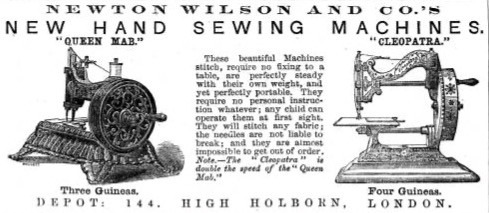
Historian and Coventry Society member, Peter James, tells us the fascinating history of sewing machine manufacture in Coventry. Peter writes……
William Newton Wilson set up Newton Wilson & Co. in a workshop in Manchester in 1854 and opened a shop at 144 High Holborn, London in 1857. The company imported and then sold sewing machines from the USA. In 1864 the American civil war was causing supply problems so they set up in Nottingham copying Howe & Singer designs. In 1866 the company started producing their own branded machines but soon faced lawsuits for patent infringement. A year later the company moved to St. George’s Foundry in Nottingham but by 1880 the company was bankrupt mainly due to legal costs incurred fighting the Singer Co.
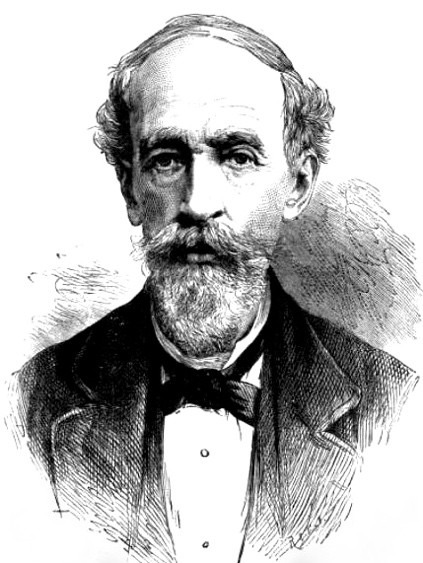
John Penn & Sons was set up in 1800 by John Penn Sr. in Cold Bath Lane Greenwich to manufacture agricultural machinery. By 1825 John Penn Jr. had taken over the management and the business focused on building marine engines. The firm supplied the Admiralty and commercial steamship companies.
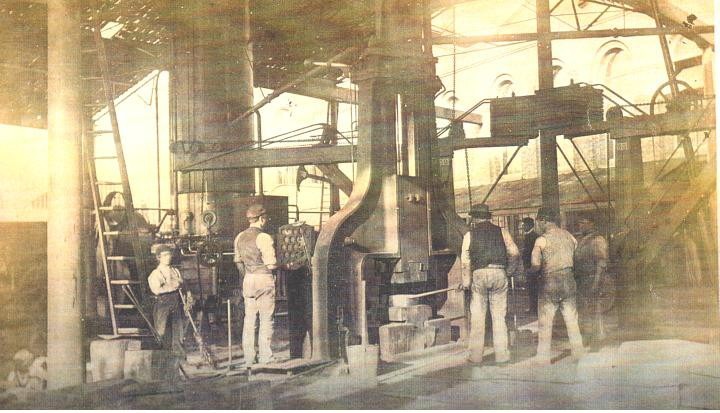
John Penn employed James Starley as a gardener. While working for him James repaired a broken sewing machine belonging to John’s wife. He also modified it and improved its overall performance. John decided to introduce him to Josiah Turner a partner at Newton Wilson & Co. who made sewing machines.
Josiah Turner was impressed with James Starley and persuaded him to join Newton Wilson & Co. in 1859 and work as an engineer. The “European” sewing machine was one of his designs. Josiah Turner, James Starley and Silas Salisbury established the European Sewing Machine Company in Little Park Street Coventry in 1859. They imported and sold American made sewing machines before moving to larger premises in King Street. This is where they commenced production of their own models including the Godiva, European, Express and Swiftsure. Coventry was chosen because there were many silk weavers out of work but more importantly a pool of skilled watchmakers was available.
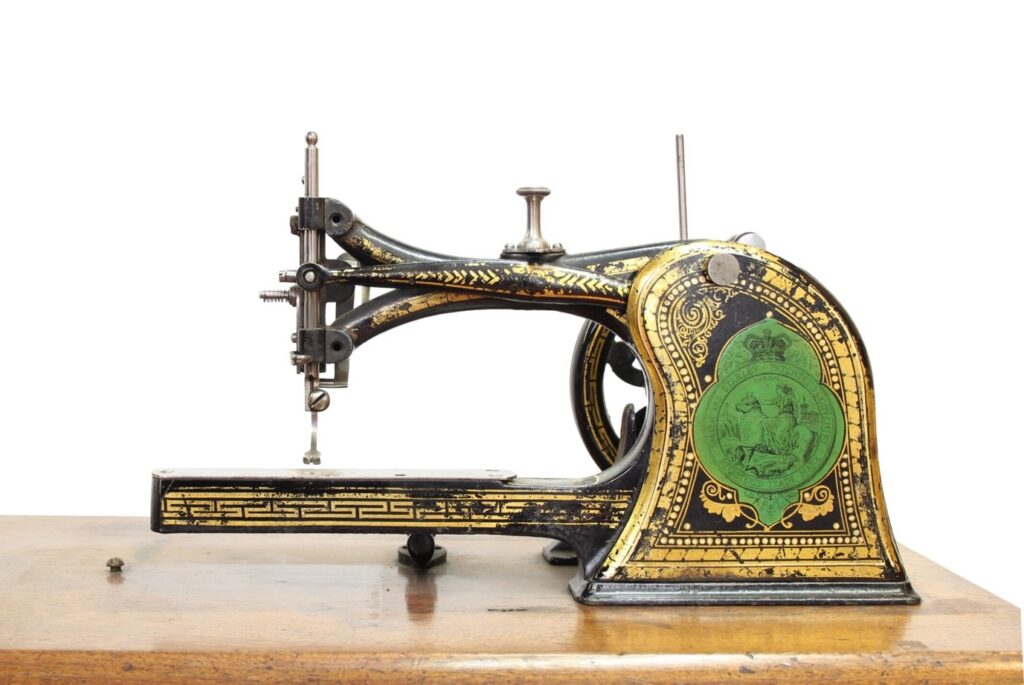
Silas Salisbury was born in New York on 21st July 1811 and was responsible for some notable developments while working alongside James Starley. During his career he held a number of patents mainly involving sewing machines but also including industrial processes. However he was made bankrupt in 1862 signalling an end to his partnership with James. Silas then returned to the USA and lived in New York where he worked as a civil engineer. Between 1862 and 1865 he applied and was successfully awarded three patents involving industrial processes. New York is where he died on the 4th February 1887.
The European Sewing Machine Company evolved and became the Coventry Sewing Machine Company around 1861. They had made significant technological advances in the two years since their establishment.
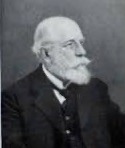
Rowley Benbow Turner was born in Southwark in 1841, the son of a baker and biscuit maker.
He later worked for Newton Wilson & Co. responsible for exporting sewing machines to Western Europe. In November 1868 in Paris he bought a Michaux Velocipede and brought it to England where he showed it to his uncle Josiah Turner – manager of the Coventry Sewing Machine Company. Turner was impressed and soon received an order for 400 Coventry built velocipedes to be exported to France. The Franco Prussian war intervened and made delivery impossible so they were all sold in this country. This was James Starley’s introduction to velocipedes.
Smith – Starley
William Borthwick Smith and James Starley formed a partnership in 1871 to manufacture sewing machines and bicycles. At St. Agnes Works in Hales Street they built Ariel cycles and at Trafalgar Works in Crow Lane they produced sewing machines. It’s estimated that they made 20,000 sewing machines there and won many awards at international exhibitions.
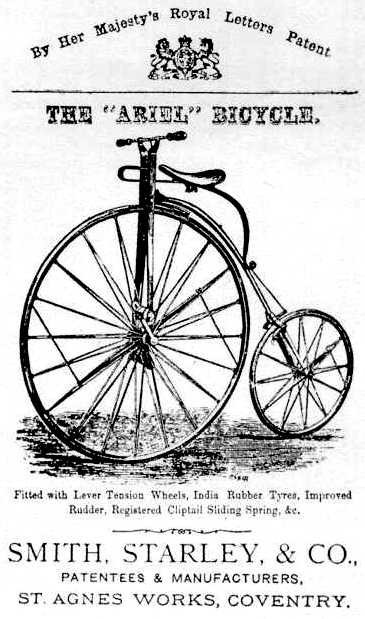
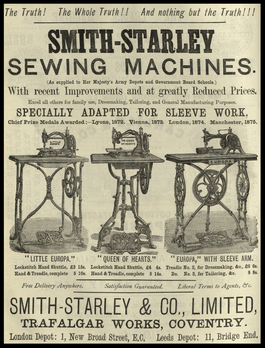
The manufacture of sewing machines was a major step in the move towards cycle making in the city. This was pivotal in the growth of Coventry as an industrial centre.
